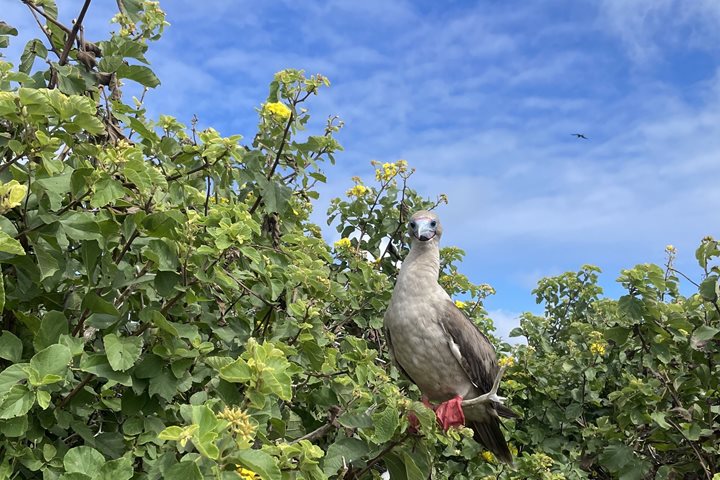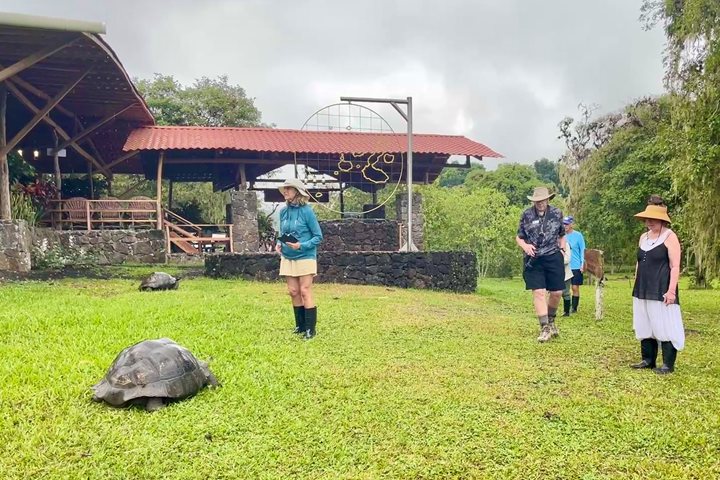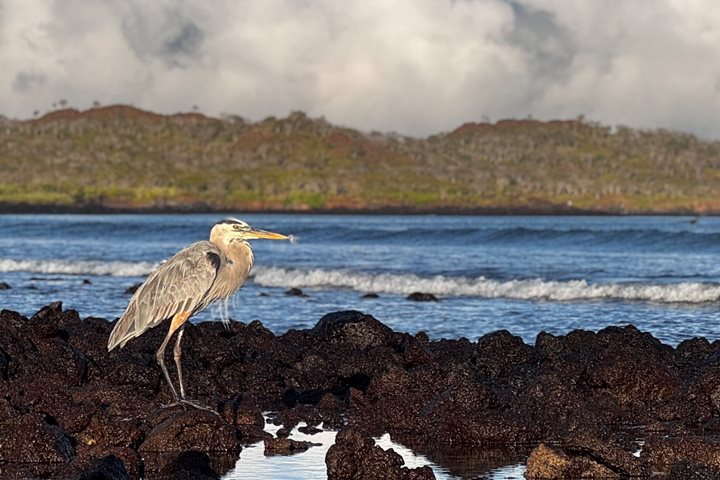Genovesa is one of the last, near-pristine islands on Earth. It is located north of the equatorial line of the Galapagos, and it is the remains of an extinct volcano. The southeastern rim has given way to winds and ocean waves, so it is possible for the National Geographic Endeavour II to anchor inside its main caldera. This tiny island is sometimes referred to as Hitchcock Island because it is the home to thousands of birds which can thrive here surrounded by rich, productive waters and a total lack of introduced predators. The total innocence and fearlessness in the eyes of the seabirds that welcomed us human visitors is a memory that will last forever.
5/29/2025
Read
National Geographic Gemini
Genovesa Island
Genovesa is considered one of the Galapagos crown jewels, and today it was showing off all of its splendor. Immediately after breakfast we put on our sturdy shoes and set out to explore Prince Philip’s Steps. This area is known for opportunities to observe not only large colonies of nesting Nazca and red-footed boobies, but maybe, just maybe, the short-eared owl which exhibits diurnal behavior on this island. After this walk we got ready for a dip in the Pacific Ocean and snorkeling along the inner coast of this caldera. The afternoon was equally amazing as we disembarked to explore Darwin Bay, along a short and easy trail that was packed with wildlife. Here we observed not only nesting frigatebirds, red-footed boobies, and Nazca boobies, but also a few yellow-crowned night herons. It was another incredible afternoon in the Galapagos Islands.









